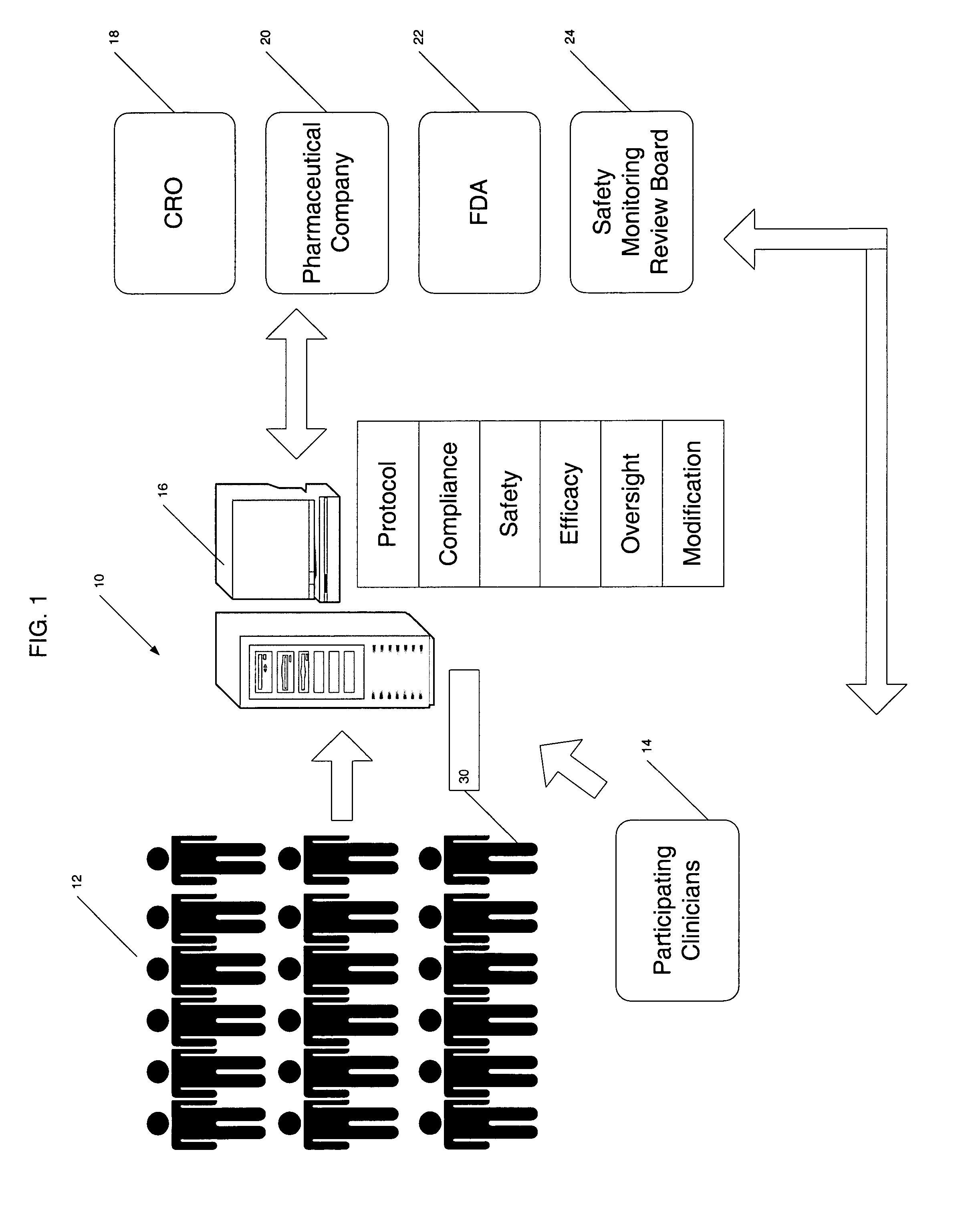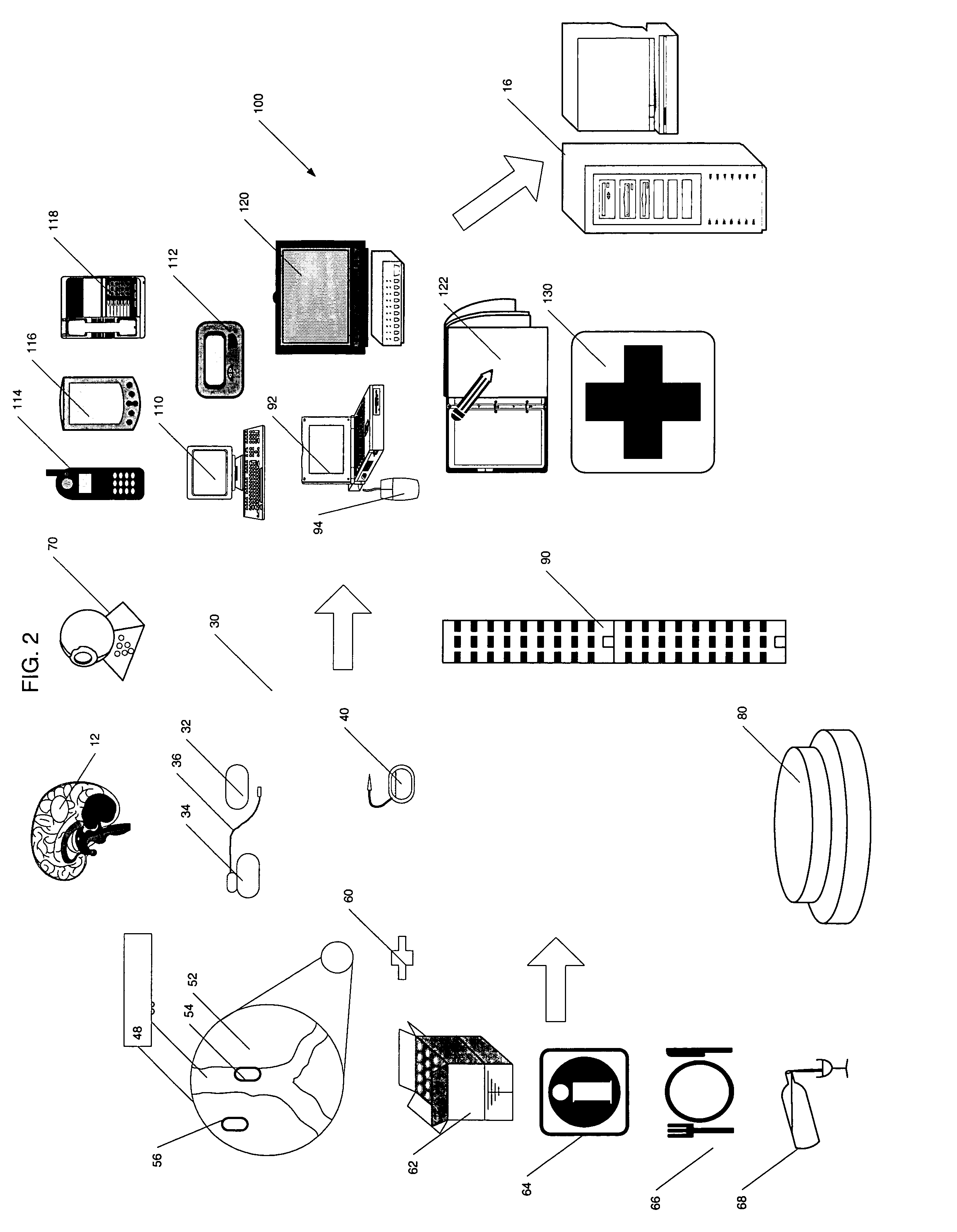Integrated data collection and analysis for clinical study
a clinical study and data collection technology, applied in the field of conducting clinical evaluation of pharmacological products, can solve the problems of limiting the ability of any company to introduce any product, and extremely expensive and time-consuming drug approval process
- Summary
- Abstract
- Description
- Claims
- Application Information
AI Technical Summary
Benefits of technology
Problems solved by technology
Method used
Image
Examples
Embodiment Construction
[0034]The present invention provides a centralized data collection system that interfaces with patients, clinicians, and end users of the data to conduct clinical evaluations of, for example, new drugs for a regulatory approval process. FIG. 1 schematically illustrates this overall system 10. The patients participating in the study are collectively referred to as the patient population 12. Data is collected from the patient population 12 as well as participating clinicians and provided to a central server or host data collection system 16 that manages the clinical study. That is, the protocol of the study is generated on or provided to the central server 16 by the sponsor or clinical research organization (CRO) 18. In this manner, the central server 16 has oversight capability and, if designated, responsibility for providing the protocol to the participating clinicians 14 (investigators and those under their supervision), monitoring compliance, determining safety and efficacy on a r...
PUM
 Login to View More
Login to View More Abstract
Description
Claims
Application Information
 Login to View More
Login to View More - R&D
- Intellectual Property
- Life Sciences
- Materials
- Tech Scout
- Unparalleled Data Quality
- Higher Quality Content
- 60% Fewer Hallucinations
Browse by: Latest US Patents, China's latest patents, Technical Efficacy Thesaurus, Application Domain, Technology Topic, Popular Technical Reports.
© 2025 PatSnap. All rights reserved.Legal|Privacy policy|Modern Slavery Act Transparency Statement|Sitemap|About US| Contact US: help@patsnap.com



